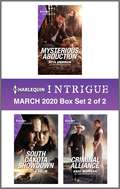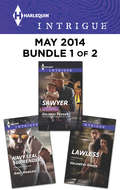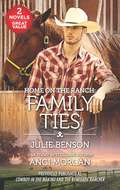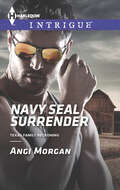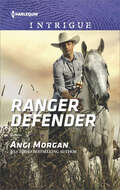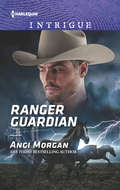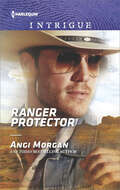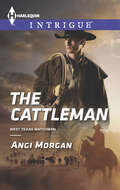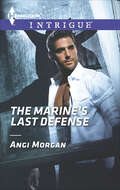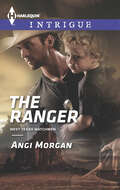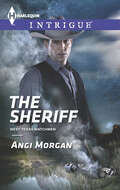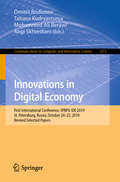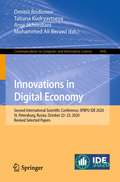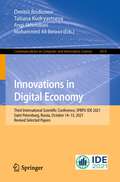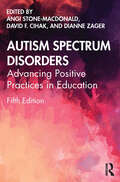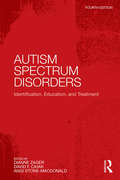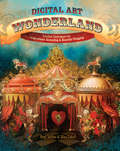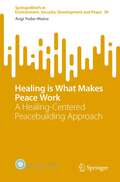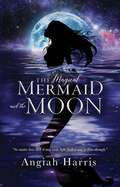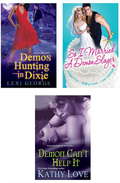- Table View
- List View
Harlequin Intrigue March 2020 - Box Set 2 of 2
by Rita Herron Angi Morgan Nicole HelmHarlequin Intrigue brings you three new titles at a great value, available now! Enjoy these suspenseful reads packed with edge-of-your-seat intrigue and fearless romance.MYSTERIOUS ABDUCTIONA Badge of Honor Mysteryby Rita HerronCora Reeves’s baby went missing in a fire five years ago, but she’s convinced the child is still out there. When Sheriff Jacob Maverick takes on the cold case, new leads begin to appear—as well as new threats. SOUTH DAKOTA SHOWDOWNA Badlands Cop Novelby Nicole HelmSheriff Jamison Wyatt has spent his life helping his loved ones escape his father’s ruthless gang. Yet when Liza Dean’s sister finds herself caught in the gang’s most horrifying crime yet, they’ll have to infiltrate the crime syndicate and find her before it’s too late.CRIMINAL ALLIANCETexas Brothers of Company Bby Angi MorganThere’s an algorithm that could destroy Dallas, and only FBI operative Therese Ortis and Texas Ranger Wade Hamilton can find and stop it. But going undercover is always dangerous. Can they accomplish their goal before they’re discovered?Look for Harlequin Intrigue’s March 2020 Box Set 1 of 2, filled with even more edge-of-your seat romantic suspense!Look for 6 compelling new stories every month from Harlequin® Intrigue!
Harlequin Intrigue May 2014 - Bundle 1 of 2
by Delores Fossen Helenkay Dimon Angi MorganHarlequin Intrigue brings you three new edge-of-your-seat romances for one great price, available now! This Harlequin Intrigue bundle includes Sawyer by USA TODAY bestselling author Delores Fossen, Lawless by HelenKay Dimon and Navy SEAL Surrender by Angi Morgan.Catch a thrill with 6 new edge-of-your-seat romances every month from Harlequin Intrigue!
Her Hot Pursuit
by Angi Morgan Danica WintersCan she catch a killer?Ranger Guardian by Angi MorganThey’ve been estranged for months, so Texas Ranger Heath Murray is surprised to be partnered with his dedicated FBI agent wife, Kendall Barlow. It’s the case of Kendall’s career—a career that has divided their marriage, though not their attraction. When their young daughter is kidnapped as a pawn, they have only each other to turn to. Saving her together is their only option. The alternative is unthinkable.Hidden Truth by Danica WintersRancher Trevor Martin has as many dangerous secrets as his housekeeper, Sabrina Parker. She’s undercover FBI, investigating whether Trevor is a gunrunning terrorist. She doesn’t know he’s CIA. But living under the same roof and in close proximity becomes a liability. Trust is uncertain, but attraction is undeniable. When they become embroiled in a series of grisly murders, will their secrets cost them their lives in the end?
Home on the Ranch: Cowboy in the Making\The Renegade Rancher
by Angi Morgan Julie BensonComing home…Cowboy in the MakingJamie Westland’s never felt at home, not with his adopted family, and not with himself. Now, on his grandfather’s Colorado ranch, the pieces of his life are coming together in a way that feels right. And Emma Donovan has so much to do with it. But when an opportunity comes along in New York, he has to decide between his old life and the promise of a new one…with Emma.The Renegade RancherFor twenty years someone has been killing off Lindsey Cook’s family in “accidents.” Brian Sloane is willing to protect the gorgeous blonde—but not to act on their attraction. Before long, the search for her stalker leads the cowboy into more trouble…and right into Lindsey’s arms. Now he’s ready to risk his life for her—and the secret her family has been dying for.
Navy SEAL Surrender (Texas Family Reckoning #1)
by Angi MorganA Navy SEAL returns home to find his family in trouble and his high school sweetheart impossible to resist. First in the Texas Family Reckoning series.Navy SEAL John Sloane thought he’d come home to Texas to save the family ranch and reconnect with his estranged twin brother. He never expected to reunite with the girl whose heart he broke. But when Alicia Adams’s daughter is kidnapped, the fearless SEAL jumps into action. However, the off-book op poses unfamiliar dangers to John, none more risky than his feelings for Alicia. To regain her trust and protect her from the kidnappers, he’ll risk his career and even his life. It all hinges on one daring scheme that could prove he’s the hero she needs—or break her heart all over again . . . “The opening scenes grab your attention and don’t let go . . . It has all the romance, suspense, wit and surprises that we love.” —More Than a Review
Protecting Their Child
by Angi MorganA ranger with unfinished business-and a baby on the wayCord McCrea was the Texas Ranger of her dreams...but their life together ended like a nightmare. They were too proud and stubborn, and there was no repairing the damage done to their family. All Kate Danver McCrea had now was the reminder he'd left growing inside her.Now the crazed gangster who'd shattered Cord's life was a free man, and he wanted to settle some old scores. Cord would do anything to protect his ex-wife, but once she was safe, they would go their separate ways again. Only, the baby changed everything. If they could survive the perils of a west Texas winter while outmaneuvering danger at every pass, they might have a second chance. Because with a traitor in their midst, they had no one to trust-except each other.
Ranger Defender: Lawman From Her Past Ranger Defender Loving Baby (Texas Brothers of Company B #2)
by Angi Morgan“Angi Morgan proves that she is one of the giants of romantic suspense . . . The villain is as masterful a creation as they come . . . fantastic.” —Fresh FictionShe needed a miracle.She got a Texas Ranger.Vivian Watts’s mission to prove her brother’s innocence has left her destitute and desperate. So when Texas Ranger Slate Thompson arrives with his knock-me-out blue eyes and belief in her case, she dares to hope again . . . until her apartment is burned to the ground. Slate offers refuge at his ranch, but when evidence suggests Vivian is being hunted . . . can he face down the real killer to protect her?
Ranger Guardian: Rules In Blackmail / Ranger Guardian (texas Brothers Of Company B) (Texas Brothers of Company B #3)
by Angi MorganA Texas Ranger’s daughter has been taken.Getting her back is all that matters.They’ve been estranged for months, so Texas Ranger Heath Murray is surprised to be partnered with his dedicated FBI agent wife, Kendall Barlow. It’s the case of Kendall’s career—a career that has divided their marriage, though not their attraction. When their young daughter is kidnapped as a pawn, they have only each other to turn to. Saving her together is their only option. The alternative is unthinkable.Texas Brothers of Company B
Ranger Protector: Safe At Hawk's Landing Ranger Protector Forgotten Pieces (Texas Brothers of Company B #1)
by Angi MorganThe USA Today–bestselling author kicks off her new series with an addictive tale of crime and passion—Texas Ranger style!All Texas Ranger Jack MacKinnon has to do is keep Megan Harper alive while they hunt down whoever’s framing her for a fatal shooting. But the gorgeous intelligence analyst is too independent for her own good—and Jack’s peace of mind.With a false murder rap and hit men gunning for her, Megan has no choice but to trust the cowboy-handsome lawman. She isn’t used to playing it safe. Yet how can she let Jack put his career and life on the line? And how can they ignore the desire ratcheting up the stakes, tempting them to take one last risk before a killer erases their future?“A fast-paced, explosive, lively story with humorous banter and intriguing characters who have chemistry in spades.” —Books & Spoons“Angi Morgan kicks off her brand new series Texas Brothers of Company B in grand style! . . . the rare romantic suspense where the romance feels real.” —Fresh Fiction
Shotgun Justice: An Anthology (Texas Rangers: Elite Troop #2)
by Angi MorganA Texas Ranger questions duty, desire, and where to draw the line in this action-packed romance from the bestselling author of Bulletproof Badge.As a Texas Ranger, it’s Jesse Ryder’s duty to protect her. As a man, it’s all he can do to avoid the temptation of Avery Travis. The Snake Eyes Killer is on Avery’s trail, but the independent deputy doesn’t want Jesse’s help. And he can’t blame her; he had walked away from her the night she’d offered him everything.Avery knows Jesse will always think of her as his best friend’s little sister. However, she is fully capable of taking care of herself . . . and knowing what and who she wants. Their lives might be in jeopardy, but the true tragedy would be to never have one more chance with the sexy Ranger.Includes a bonus short story by USA Today–bestselling author Delores Fossen
The Cattleman: Heart Of A Hero The Cattleman Countermeasures (West Texas Watchmen Series #2)
by Angi MorganThe author of The Sheriff “pens a lovely comeback story . . . With equal parts action, romance and compelling characters, she hits all the right notes” (RT Book Reviews, Top Pick).A city girl like Beth Conrad has no business on Nick Burke’s Texas ranch. Even if the city girl in question is a DEA agent investigating gunrunners supposedly using Nick’s land as a staging ground. One look in her eyes and he can’t resist helping with her sure-to-fail mission . . . or his undeniable attraction to her. But Nick is fighting demons from his past, which leaves little room for romance. Beth vows to help Nick face his PTSD, and Nick promises to pose as her fiancé to help her bring down the perps. But when circumstances force Nick to relive the traumatic shooting that altered his life—this time with Beth’s safety in the balance—he makes it his duty to ensure the outcome will be a whole lot happier.
The Marine's Last Defense: Wanted Unrepentant Cowboy The Marine's Last Defense
by Angi MorganA woman on the run finds love and protection with a marine-turned-cop in this romantic suspense from a USA Today–bestselling author.After escaping a killer, playing dead was the only way Sabrina Watkins could get out of Amarillo alive. Now she’s living in Dallas, where no one knows her true identity. Until homicide cop Jake Craig shows up.A half-frozen pup he finds at a crime scene brings Jake to Sabrina’s doorstep. Suddenly, the former marine is playing hero to a desperate woman on the run. Sworn to clear her name, Jake’s already falling for the stunning brunette with the amethyst eyes. Can he keep her safe and turn a rescue mission into a last chance at love?“Morgan launches the volley from the first pages so readers aren’t left wondering whodunit, but they’ll have to pay attention to the escalating action to keep up with the characters, who are in trouble from the get-go.” —RT Book Reviews
The Ranger (West Texas Watchmen Series #3)
by Angi MorganA Texas Ranger must protect a single mom with a target on her back in this breathtaking romantic thriller from the author of The Cattleman and The Sheriff.Texas Ranger Mitch Striker’s uncomplicated bachelor lifestyle suits him just fine: catch the bad guys and move on. But there’s nothing straightforward about struggling single mom Brandie Ryland or her adorable four-year-old son, Toby. The beautiful redhead is the prime suspect in Mitch’s undercover investigation. But when a hostage standoff leaves Brandie’s family vulnerable and uncovers a roomful of contraband and drugs, Mitch second-guesses her involvement in the crime . . . and his ability to keep his emotional distance. With the danger growing and the clock ticking, Mitch must save Brandie, catch the perps and handle the daddy heartstrings Toby keeps tugging on. Then he’ll have to face the secrets he’s sure Brandie’s keeping—before they become his undoing.
The Renegade Rancher: Rescue At Cardwell Ranch The Renegade Rancher Shattered (Texas Family Reckoning #2)
by Angi MorganA cowboy discovers that a killer’s next target may be the woman he’s been looking for all his life. From the author of Navy SEAL Surrender.It’s clear to Texas rancher Brian Sloane that Lindsey Cook will be a serial killer’s next victim. For twenty years someone has been systematically killing off her family in “accidents,” and recently her car was deliberately run off the road. The handsome cowboy is willing to be the protector the gorgeous blonde wants—but unwilling to act on their instant attraction. Before long, the search for Lindsey’s stalker leads Brian into more trouble . . . and right into Lindsey’s arms. After one smoldering kiss, he knows there’ll be no turning back. Though never one for relationships, he’ll risk his life for her . . . and the surprising secret her family has been dying for.Praise for Navy SEAL Surrender“The opening scenes grab your attention and don’t let go . . . It has all the romance, suspense, wit and surprises that we love.” —More Than a Review
The Sheriff: Hard Core Law Single Father Sheriff Be On The Lookout: Bodyguard (West Texas Watchmen Series #1541)
by Angi MorganMeet the West Texas Watchmen. “A smashing beginning! . . . The Sheriff is tightly plotted; the action is breathtaking and the characters captivating.” —Fresh FictionSheriff Pete Morrison knows the secret in his past could destroy his father. Yet instead of resigning his job and exposing the lie, he finds himself protecting Andrea Allen—a beautiful astronomer who witnessed a gun-smuggling operation and a college student’s abduction. Determined to be independent, a relationship with her conflicted protector isn’t in the cards. No matter how safe she feels in Pete’s strong arms. But when things take a turn for the worse and Andrea exchanges herself for the abducted student, only Pete can save her from the horrible fate that awaits her.“Morgan not only has an independent and quirky heroine, but an adorably quirky—and steamy—romance between the hero and heroine. While the playful banter was a nice addition, the storyline also felt fresh and full of intrigue.” —Romantic Times
Innovations in Digital Economy: First International Conference, SPBPU IDE 2019, St. Petersburg, Russia, October 24–25, 2019, Revised Selected Papers (Communications in Computer and Information Science #1273)
by Dmitrii Rodionov Tatiana Kudryavtseva Mohammed Ali Berawi Angi SkhvedianiThis book constitutes the revised and extended papers of the First International Conference on Innovations in Digital Economy, SPBU IDE 2019, held in St. Petersburg, Russia, in October 2019.The 8 papers presented were thoroughly reviewed and selected for publication from 78 submissions. The papers are organized according the following topical sections: economic efficiency and social consequences of digital innovations implementation; industrial, service and agricultural digitalization; regional innovation systems and clusters as drivers of the economic growth during the Fourth Industrial Revolution; response of an educational system and labor market to the digital-driven changes in the economic system.
Innovations in Digital Economy: Second International Scientific Conference, SPBPU IDE 2020, St. Petersburg, Russia, October 22–23, 2020, Revised Selected Papers (Communications in Computer and Information Science #1445)
by Dmitrii Rodionov Tatiana Kudryavtseva Mohammed Ali Berawi Angi SkhvedianiThis book constitutes the revised and extended papers of the Second International Conference on Innovations in Digital Economy, SPBU IDE 2020, held in St. Petersburg, Russia, in October 2020.The 9 papers presented were thoroughly reviewed and selected for publication from 117 submissions. The papers are organized according the following topical sections: economic efficiency and social consequences of digital innovations implementation; industrial, service and agricultural digitalization; end-to-end digital technologies in industry.
Innovations in Digital Economy: Third International Scientific Conference, SPBPU IDE 2021, Saint Petersburg, Russia, October 14–15, 2021, Revised Selected Papers (Communications in Computer and Information Science #1619)
by Dmitrii Rodionov Tatiana Kudryavtseva Mohammed Ali Berawi Angi SkhvedianiThis book constitutes the revised selected papers of the Third International Conference on Innovations in Digital Economy, SPBU IDE 2021, held in St. Petersburg, Russia, in October 2021.The 23 papers presented were thoroughly reviewed and selected for publication from 153 submissions. The papers are organized according the following topical sections: economic efficiency and social consequences of digital innovations implementation; regional innovation systems and clusters as drivers of the economic growth during the Fourth Industrial Revolution; industrial, service and agricultural digitalization; response of an educational system and labor market to the digital-driven changes in the economic system; digital transformation trends in the government and financial sector.
Autism Spectrum Disorders: Advancing Positive Practices in Education
by David F. Cihak Dianne Zager Angi Stone-MacDonaldThe fifth edition of Autism Spectrum Disorders: Advancing Positive Practices in Education provides readers with a comprehensive and accessible understanding of current research and evidence-based practices in autism spectrum disorders (ASD), linking research, theory, and practice. This new edition includes new chapters on trauma and co-morbidity, current trends in autism research, social media, neurodiversity, and aging in people with ASD. It also features updated content on international contexts and culturally sustaining and relevant practices. Aligned with DSM-5 diagnostic criteria, this text continues to be critical reading for students and researchers in special and inclusive education programs.
Autism Spectrum Disorders: Identification, Education, and Treatment
by Angi Stone-Macdonald David F. Cihak Dianne ZagerThe field of autism has been growing at an unprecedented rate in recent years. In addition to an actual rise in the number of classic DSM-IV cases, broadened diagnostic criteria have uncovered a wider range of autistic behaviors and ability levels. The third edition of this well-known text continues the mission of its predecessors--to present a comprehensive, readable, up-to-date overview of the field of autism, one that links research, theory, and practice in ways that are accessible to both practitioners and parents. Key features include:*Expanded Coverage--To accommodate the recent explosion of research, the book has been expanded from 11 to 14 chapters that examine the impact of autism on the individual and the family from infancy through adulthood.*Expertise--Internationally recognized experts offer cutting-edge treatment and educational information on topics such as early diagnosis, medical treatment, assessment, educational methods, language development, behavior regulation, and family support.*Neurobiological Research--Comprehensive medical research and treatment chapters provide an understandable overview of neurobiological research and current treatments including when and how medication can be employed as part of a treatment plan.*Focus on Early Years--Old sections I and III have been combined and a new 3-chapter section on early identification and intervention added.*Focus on Parents and Families--In addition to a chapter on the evolving role of families, a new chapter addresses family needs during the preschool years.*Integration of Assessment and Intervention--The chapters on assessment and intervention have been reorganized and more closely integrated in keeping with current thinking about their inter-relatedness.*Future Directions--Two chapters discuss emerging directions in this exploding field and how to make informed decisions among a variety of approaches.This book is appropriate for anyone--students, practitioners, or parents--who must provide care for an autistic child.
Digital Art Wonderland: Creative Techniques for Inspirational Journaling and Beautiful Blogging
by Angi Sullins Silas ToballSet out on a digital adventure! Come inside Digital Art Wonderland where digital art and art journaling embark together on a luscious visual journey. The daring crew of Angi Sullins and Silas Toball give you a personal tour through a digital art journaling world, showing you how to make your own wonderous creations through instruction, design concepts and lots of inspiration. In Digital Art Wonderland, you'll find: 8 tutorials with techniques, tricks and trips for the intermediate Adobe Photoshop user to enhance physical art as well as create digital art from scratch. Instructions and ideas to incorporate a variety of typography into your artwork. A guide to using your art in the blogging world, including information about blog set-up, adding personal design touches, blog etiquette and more. Exercises for breaking free of art-making fears and letting your artistic instincts take over. Let Digital Art Wonderland show you a whole new world of art making.
Healing is What Makes Peace Work: A Healing-Centered Peacebuilding Approach (SpringerBriefs in Environment, Security, Development and Peace #39)
by Angi Yoder-MainaThe book goes beyond mental health and psychosocial support (MHPSS) to a holistic approach centered on healing. The book lays at the intersection of peacebuilding, global mental health, and development. In many parts of the world, entire generations live in chronic violence—just surviving. The exposure to violence has long-lasting effects which are not well accounted for in conflict analysis, stabilization efforts, peacebuilding, and governance initiatives. Extreme exposure to violence, abuse, neglect, and marginalization negatively affects levels of resilience and the ability of affecting the transition from violence to peace. A healing-centered peacebuilding approach requires fundamental changes in how systems are designed, organizations function, and practitioners engage with people, their communities, and their institutions. Key elements of the practice-based approach included inclusion, customization and contextualization, breaking cycles of violence, systems thinking, and trauma-informed tools. The approach considers emotional distress to be a critical variable in violent conflict and instability. Trauma is not only a consequence of violence, but also a cause of instability.
The Magical Mermaid and the Moon
by Angiah Harris"No matter how dark it may seem, light finds a way to shine through," the mermaid king tells his daughter, and as she explores his undersea kingdom, she never doubts his words. In the days before the moon and tides exist, the kingdom is at peace. Singing fills the streets, and the subjects thrive under the reign of their king, queen, and princess. Then a shocking betrayal robs the kingdom of light, silences all singing, and plunges the mermaid princess into grief and despair. As her world falls apart, she faces questions she never expected to ask. Can she alone sing loudly enough to defeat fear? What light could shine brightly enough to overcome the darkness? Two unexpected encounters teach her surprising lessons about love, hope, and forgiveness. Along her journey toward freedom for herself and her people the truth becomes clear: if her kingdom will ever be restored to its former glory, the entire world will have to change.
A Demonic Bundle: So I Married a Demon Slayer, Demon Can't Help It & Demon Hunting in Dixie
by George Fox Kathy Love Angie LexiA Demon. . . Not Just In Bed Practical Josephine "Jo" Burke has no patience for the paranormal--even if she's been having some strange visions lately. But if she is losing her mind, at least it would explain her new attraction to her co-worker, the least suitable man she could ever fall for. . . Maksim Kostova has no idea why he's so drawn to feisty mortal Jo, but he does know how she feels about the supernatural. Forget about her accepting him for what he really is, she'd never even believe him in the first place. Or would she? When Jo confesses to him that she's been seeing visions of a dead girl, it seems anything's possible. . . A warrior, a demon, and the girl next door. . . Looking For TroubleAddy Corwin is a florist with an attitude. A bad attitude, or so her mama says, 'cause she's not looking for a man. Mama's wrong. Addy has looked. There's just not much to choose from in Hannah, her small Alabama hometown. Until Brand Dalvahni shows up, a supernaturally sexy, breathtakingly well-built hunk of a warrior from-well, not from around here, that's for sure. Mama thinks he might be European or maybe even a Yankee. Brand says he's from another dimension. Addy couldn't care less where he's from. He's gorgeous. Serious muscles. Disturbing green eyes. Brand really gets her going. Too bad he's a whack job. Says he's come to rescue her from a demon. Puh-lease. But right after Brand shows up, strange things start to happen. Dogs talk and reanimated corpses stalk the quite streets of Hannah. Her mortal enemy Meredith, otherwise known as the Death Starr, breaks out in a severe and inexplicable case of butt boils. Addy might not know what's going on, but she definitely wants a certain sexy demon hunter by her side when it all goes down. . . "A not-to-be-missed Southern-fried, bawdy, hilarious romp. " -Beverly Barton, New York Times Bestselling Author"A demonically wicked good time. " -Angie FoxIn the lusty humidity of the Deep South, among the neon lights of Vegas, and the glitz of high-fashion, demon slayers are the new sexy. . . Hot! By Kathy LoveAt Hot! Magazine, the devil really does wear Prada. When the CEO is an actual demon and the mail room guys are undercover demon slayers, it's not beyond the realm of possibility for an up-and-coming photographer and a model possessed by much more than a sweet tooth to fall in love. What Slays In Vegas by Angie FoxWhen a sexy succubus comes up against a fearless demon slayer intent on killing her boss, a truly wild Vegas night turns into a quickie wedding. But in a city where anything goes, a demon slayer wedding a succubus is strictly forbidden. Which doesn't mean either is rushing to jump out of the marriage bed. The Bride Wore Demon Dust by Lexi GeorgeHe's perfection in a tuxedo-more so out of it-and on a mission to protect his Alabama gal from the mysterious mayhem intent on her destruction. But the bride is a spunky steel magnolia with special powers of her own, determined to drop-kick evil forces across the state line and give her slayer a run for his money. Praise for Angie Fox"She has a genuine gift for creating dangerously hilarious drama. " -RT Book ReviewsPraise for Kathy Love"Fangs for the Memories will make you laugh until milk comes out of your nose. " -MaryJanice DavidsonPraise for Lexi George"A not-to-be-missed Southern-fried, bawdy, hilarious romp. " -Beverly Barton on Demon Hunting in Dixie
Between
by Angie AbdouVero and her husband Shane have moved out of the sweet suite above his parents' garage and found themselves smack in the middle of adulthood?two kids, two cars, two jobs. They are not coping well. In response to their looming domestic breakdown, Vero and Shane get live-in help with their sons?a woman from the Philippines named Ligaya (which means happiness); the children call her LiLi. Vero justifies LiLi's role in their home by insisting that she is part of their family, and she goes to great lengths in order to ease her conscience. But differences persist; Vero grapples with her overextended role as a mother and struggles to keep her marriage passionate, while LiLi silently bears the burden of a secret she left behind at home.Between offers readers an intriguing, searing portrait of two women from two different cultures. At the same time, it satirizes contemporary love, marriage, and parenthood by exposing the sense of entitlement and superiority at the heart of upper-middle-class North American existence through a ubiquitous presence in it: the foreign nanny. Angie Abdou comically and tragically tackles the issue of international nannies by providing a window on motherhood where it is tangled up with class, career, labor, and desire.Angie Abdou has a PhD in English literature from the University of Calgary and teaches English and creative writing at the College of the Rockies in Cranbrook, British Columbia, Canada. Her first novel, The Bone Cage (NeWest Press), was a finalist in CBC's Canada Reads competition.
